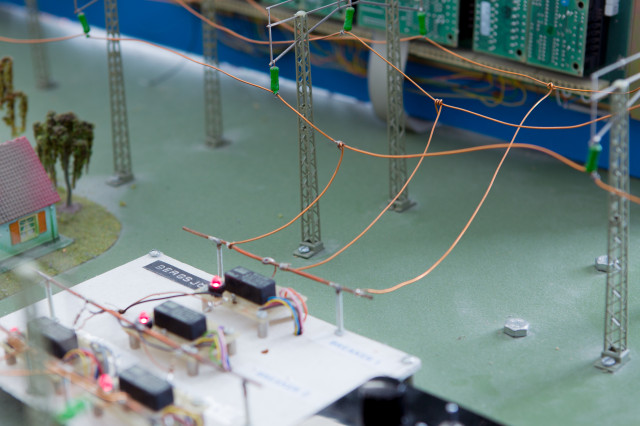- development of the smaller and larger celestial bodies of the solar system
- physics of the atmospheres, ionospheres and magnetospheres of the planets
- rocky planets, gas- and ice giants
- smaller bodies: comets, asteroids and other small celestial bodies
- space exploration and space probes
- instrument for in-situ measurements in planetary environments
- remote sensing of planetary environments with groundbased and spaceborne telescopes
- computing and analysis of original data from planetary environments
EF2243 Solar System Physics 7.5 credits

The course provides an overview on the physics and exploration of planetary bodies (planets, moons, asteroids, etc.) in our Solar System.
Information per course offering
Choose semester and course offering to see current information and more about the course, such as course syllabus, study period, and application information.
Course syllabus as PDF
Please note: all information from the Course syllabus is available on this page in an accessible format.
Course syllabus EF2243 (Autumn 2024–)Content and learning outcomes
Course contents
Intended learning outcomes
After passing the course, the student shall be able to
- describe the essential stages of how our solar system was formed
- give an account of basic properties of planetary atmospheres and ionospheres including composition, vertical profiles, sources and losses
- define and compare the different bodies in our solar system and describe their magnetospheres
- analyse and explain examples of original data from telescope and space probes
- give an account of physical principles of experimental methods that are used most often in planetary plasma physics
- describe measurement methods for space probes and their technical implementations
- research, critically review and summarise in a presentation a subject related to the physics of planetary environments.
Literature and preparations
Specific prerequisites
Knowledge in basic mechanics and in electromagnetism or electrical engineering for a total of 10 credits.
Knowledge in mechanics may, for example, have been acquired through
- completed course in mechanics, 6 credits, such as SG1102/SG1109/SG1112/SG1117/SG1120/SG1130/SG1132/SG1133
- completed course in physics, 6 credits, with parts dealing with mechanics like SK1108.
Knowledge in electromagnetism or electrical engineering may, for example, have been acquired through
- completed course in theoretical electrical engineering, 6 credits, such as EI1320/EI1220/EI1228
- completed course in electrical engineering/circuit electronics/electrical principles, 6 credits, such as HE1027/IF1330/IE1206/EI1110/EI1120/MF1016/MF1017/HE1200
- completed course in physics, 6 credits, with parts dealing with electromagnetism, magnetic fields and waves as SK1104/SK1108/SK1110/SK1112/SK1114/SK1115/SK1117/SK1118.
Knowledge in English corresponding to the Upper Secondary School course English B/English 6.
Literature
Examination and completion
Grading scale
Examination
- TEN1 - Oral exam, 3.0 credits, grading scale: A, B, C, D, E, FX, F
- LAB1 - Laboratory work, 3.0 credits, grading scale: P, F
- SEM1 - Seminars, 1.5 credits, grading scale: P, F
Based on recommendation from KTH’s coordinator for disabilities, the examiner will decide how to adapt an examination for students with documented disability.
The examiner may apply another examination format when re-examining individual students.
If the course is discontinued, students may request to be examined during the following two academic years.
Examiner
Ethical approach
- All members of a group are responsible for the group's work.
- In any assessment, every student shall honestly disclose any help received and sources used.
- In an oral assessment, every student shall be able to present and answer questions about the entire assignment and solution.
Further information
Course room in Canvas
Offered by
Main field of study
Education cycle
Supplementary information
In this course, the EECS code of honor applies, see:
http://www.kth.se/en/eecs/utbildning/hederskodex